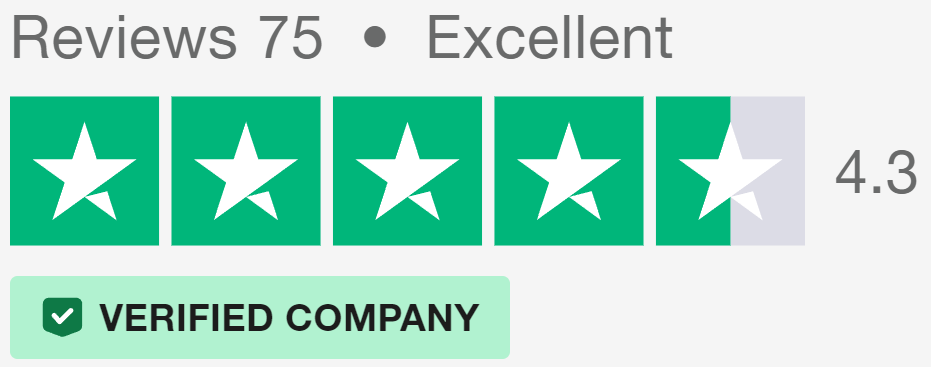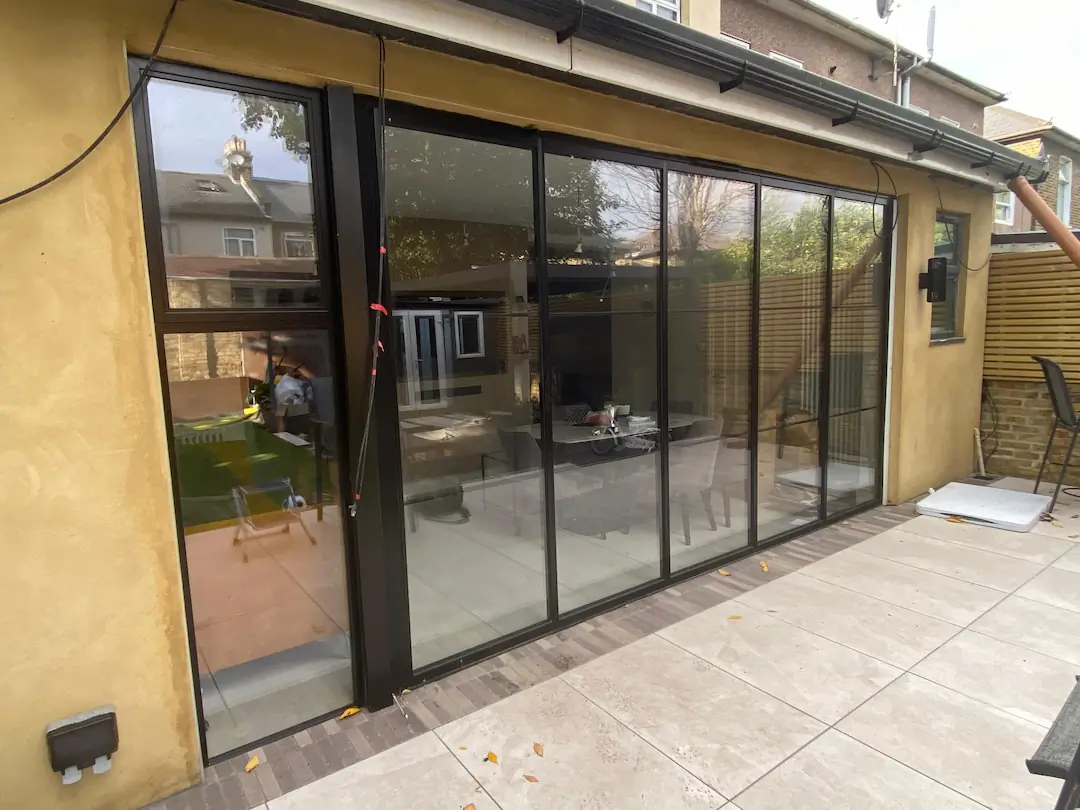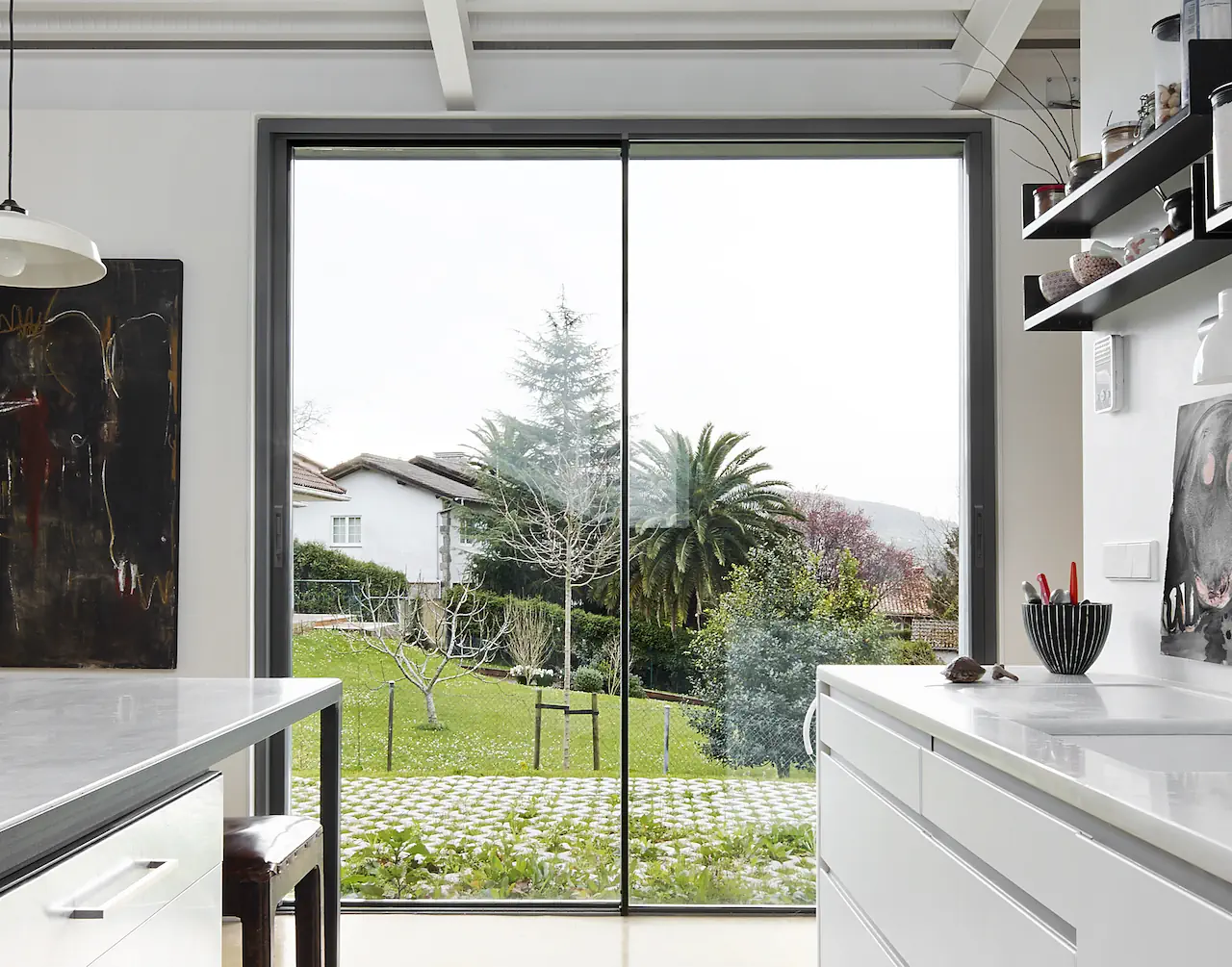Choosing Sliding Back Doors – Guide for Homeowners
Table of Contents

Introduction to Sliding Back Doors
Sliding back doors are a popular choice for homes looking to connect indoor spaces with outdoor areas. These external doors consist of large glass panels that slide horizontally along a track, creating a wide opening when fully retracted. Unlike traditional hinged doors or French doors, sliding back doors don’t swing open, making them ideal for spaces where room is at a premium.

Key Features
Smooth Gliding Mechanism
The heart of any sliding back patio door is its gliding mechanism. High-quality tracks and rollers ensure the door moves smoothly, allowing you to open and close it with minimal effort. This ease of use is particularly helpful when your hands are full – imagine carrying a tray of drinks to your garden party without struggling with a door handle.
Large Glass Panels
Most sliding back doors feature expansive glass panels that offer unobstructed views of your outdoor space. These panels can vary in size, but typically range from 1.8 to 2.4 metres in height. The width of each panel usually falls between 0.75 and 2.5 metres, though custom sizes are available for unique spaces.
Locking Systems
Security is a top priority for any back door. Modern sliding back patio doors come equipped with multi-point locking systems. These locks engage at several points along the door frame, providing robust protection against forced entry.
Common Materials
uPVC
Unplasticized Polyvinyl Chloride, or uPVC, is a low-maintenance material that’s resistant to weathering and doesn’t require painting. It’s an affordable option that provides good insulation. However, uPVC doors may not be as slim or visually appealing as some alternatives.
Aluminium
Aluminium back sliding doors offer a sleek, contemporary look with slim frames that maximise glass area. They’re strong, durable, and resistant to corrosion. While aluminium isn’t naturally insulating, modern doors incorporate thermal breaks to boost energy efficiency.
Timber
For a classic, warm appearance, timber back door sliding doors are hard to beat. They offer excellent insulation and can be painted or stained to match your décor. However, wood requires more upkeep than other materials to prevent warping or rotting.
Composite
Composite sliding doors combine the best features of different materials. A typical composite door might have an aluminium exterior for durability, a timber interior for warmth, and a foam core for insulation. This combination offers excellent performance but can be pricier than single-material options.
Sizing Options
Standard widths typically range from 1.8 to 7 metres, but custom sizes are available for unique openings. Height-wise, most sliding back doors fall between 2 and 2.4 metres.
When measuring for a back sliding door system, don’t forget to account for the frame. Measure the width at three points – top, middle, and bottom – and use the smallest measurement. For height, measure from the top of the opening to the floor at both sides and the centre. Again, use the smallest measurement to ensure a proper fit.
Sliding back doors come in various configurations. A basic setup might have two panels, with one fixed and one sliding. More complex arrangements can include multiple sliding panels or even corner units that open up two walls of a room. Your choice will depend on the size of your opening and how much access you want to your outdoor space.
Benefits of Sliding Back Doors
Sliding back doors offer more than just a way to access your garden. They bring a range of advantages that can improve your daily life and your home’s overall appeal.
Energy Efficiency
Modern sliding patio doors are designed with energy efficiency in mind. Double or triple glazing helps to insulate your home, keeping it warm in winter and cool in summer. This can lead to lower heating and cooling costs, making back sliding doors a smart choice for the energy-conscious homeowner.
The thermal performance of sliding doors has improved a lot in recent years. Many now feature low-emissivity (low-E) glass coatings that reflect heat back into your home during colder months. In summer, these coatings work in reverse, reflecting solar heat to keep your interior cool.
Enjoying Natural Light

The large glass panels allow sunlight to pour in, brightening up your living spaces. This influx of light can make rooms feel larger and more open, creating a welcoming atmosphere throughout the year.
During darker months, the extra daylight from sliding back doors can help combat the gloom. You might find yourself relying less on artificial lighting during the day, potentially reducing your energy bills. The psychological benefits of increased natural light are well-documented too – it can boost mood and productivity, making your home a more pleasant place to be.
Space Saving
Unlike traditional swing doors, sliding doors don’t need clearance to open, making them ideal for smaller rooms or tight spaces. This feature allows you to make the most of your floor plan, positioning furniture or plants closer to the door without worrying about obstructions.
The space-saving aspect of sliding back doors also comes into play when you’re entertaining. With a large sliding door fully open, you can create a wide, unobstructed passage between your indoor and outdoor spaces. This setup is perfect for garden parties or barbecues, allowing guests to move freely between areas.
Potential Drawbacks of Sliding Back Doors
Security Issues
Security is a common concern with sliding back doors. The large glass panels and sliding mechanism can be seen as vulnerable points. However, modern external sliding door designs have made big strides in addressing these concerns.
Many sliding back patio doors now come with multi-point locking systems that secure the door at several points along the frame. Toughened or laminated glass is often used, which is more resistant to breaking. Some models also feature anti-lift mechanisms to prevent the door from being lifted off its tracks.
Despite these improvements, it’s still wise to take extra precautions. Installing a security bar or a secondary locking mechanism can provide additional peace of mind. Remember, visible security measures can also act as a deterrent to potential intruders.
Maintenance Requirements
Like any part of your home, sliding back doors require regular maintenance to function optimally. The tracks that the doors slide on can accumulate dirt and debris over time, which may impede smooth operation if not cleaned regularly.
For back sliding doors, regular cleaning of both the glass and the tracks is essential. A quick vacuum of the tracks followed by wiping with a damp cloth can prevent most issues. The rollers may need occasional lubrication to keep the door gliding smoothly.
Weather stripping around the door frame may need replacement every few years to maintain a good seal. This is particularly important for energy efficiency and preventing drafts. While these maintenance tasks aren’t overly complex, they do require consistent attention to keep your sliding back doors in top condition.
Potential for Drafts
While modern sliding doors are designed to be well-sealed, they can potentially let in drafts if not properly installed or maintained. The area where the sliding panels overlap is a common spot for air leakage.
To combat this issue, many large sliding back doors come with brush seals or interlocking systems at the meeting stiles. Regular checks of the weather stripping and seals can help identify any areas where drafts might be occurring. If you notice cold air coming in around your sliding back door, it may be time to replace the weather stripping or adjust the door’s fit.
Limited Ventilation Options
Unlike hinged doors or windows that can be left partially open, sliding back doors typically only offer full open or closed positions. This can limit your options for ventilation, especially if you want to let in a small amount of fresh air while maintaining security.
Some sliding back door models address this by incorporating tilt-and-turn mechanisms or small ventilation panels. These features allow you to let in fresh air without fully opening the door. If ventilation is a priority for you, look for sliding back doors that offer these additional options.
Sliding Back Door Styles

Traditional vs Modern Designs
Traditional sliding back doors often feature wider frames and divided glass panes, lending a classic look to your home. These doors might incorporate elements like Georgian bars (also known as Crittall style doors) or leaded glass designs, adding character and charm to older properties.
In contrast, modern sliding back doors tend to prioritise minimalism and clean lines. They often boast slimmer frames to maximise glass area and unobstructed views. Some cutting-edge designs even conceal the frame within the wall cavity when open, creating a truly open feel. Whether you opt for a traditional or modern style, sliding back doors can be customised to match your home’s aesthetic.
Framed and Frameless Options
Framed sliding back doors are the most common type. The frame provides structure and houses the sliding mechanism. These doors offer a wide range of material options, from uPVC and aluminium to wood and composite materials. Framed doors can be designed to match your existing windows and other doors, creating a cohesive look across your home’s exterior.
Frameless sliding back doors, on the other hand, offer a striking, contemporary appearance. These doors use thicker glass panels that can support themselves without visible framing around the edges. The result is a nearly invisible barrier between indoors and outdoors when closed, and an expansive opening when slid aside. While visually impressive, frameless back sliding doors may have limitations in terms of size and weatherproofing compared to their framed counterparts.
Multi-Panel Doors
For those with larger openings, multi-panel sliding back doors are an excellent option. These systems use three or more panels that slide along multiple tracks, allowing for wider openings than standard two-panel doors.
Some multi-panel sliding back doors can span entire walls, effectively turning a room into an open-air space when fully retracted. These large sliding back doors are particularly popular for properties with stunning views or for homeowners who frequently entertain outdoors. When choosing multi-panel doors, consider factors like the weight of the panels, ease of operation, and how they’ll stack when open to ensure they meet your needs and space constraints.
Pocket Doors
A unique variation on sliding back doors is the pocket door style. These doors slide into a cavity in the adjacent wall when opened, completely disappearing from view. This design creates an unobstructed opening without the visual presence of stacked door panels.
Pocket sliding back doors offer a sleek, streamlined look and are ideal for spaces where you want the option to completely remove the visual barrier between indoors and outdoors. However, they require specific wall construction to accommodate the pocket, making them more suitable for new builds or major renovations rather than simple replacements.
Living with Your Sliding Back Door
Once you’ve installed your sliding back door, you’ll want to make the most of it. Proper care and attention will keep your door functioning smoothly for years to come, while smart use can improve your daily life at home.
Smooth Operation Tips
To keep your sliding back doors gliding effortlessly, regular maintenance is key. Start by cleaning the tracks at least once a month. Use a vacuum to remove loose debris, then wipe down the tracks with a damp cloth. For stubborn grime, a mixture of warm water and mild dish soap works wonders.
Don’t forget about the rollers – they’re the unsung heroes of your back sliding door’s smooth operation. Apply a silicone-based lubricant to the rollers every few months. This will prevent squeaking and ensure the door moves without resistance. If you notice any sticking or jerky movements when operating your sliding back door, it’s time for a thorough clean and lubrication session.
Weatherproofing Advice
Proper weatherproofing is essential for sliding back doors to maintain energy efficiency and prevent drafts. Check the weatherstripping around the door frame regularly for signs of wear or damage. If you notice any gaps or cracks, replace the weatherstripping promptly.
For sliding back patio doors exposed to harsh weather, consider applying a water-repellent coating to the tracks. This can help prevent rust and corrosion, extending the life of your door’s mechanisms. During winter months, ensure that snow and ice don’t accumulate in the tracks, as this can impede operation and potentially damage the door.
Safety for Children and Pets
While sliding back doors offer great views and easy outdoor access, they can pose safety risks for young children and pets. Consider installing childproof locks or door guards to prevent accidental openings. These devices can be easily removed when adults need to use the door.
For homes with dogs, applying window film or decals to the glass panels of your sliding back door can prevent accidents. Dogs may not always recognise glass barriers and could run into them. The film or decals make the glass more visible without obstructing your view much.

Furnishing Tips
One of the main advantages of large sliding back doors is their ability to blur the line between indoor and outdoor spaces. To make the most of this feature, consider extending your indoor flooring material to your outdoor area. This creates a visual continuity that can make your space feel larger.
When furnishing the area around your sliding back door, opt for weather-resistant materials that can withstand exposure when the door is open. This allows you to create a cohesive look.
Frequently Asked Questions
How do sliding back doors differ from French doors?
While both options connect indoor and outdoor spaces, sliding back doors and French doors have distinct characteristics. Back door sliding doors operate on a track, sliding horizontally to open, whereas French doors swing open like traditional doors. Sliding doors typically offer a wider opening when fully retracted and don’t require clearance space to open, making them an excellent alternative to French doors in areas with limited room. French doors, however, can often provide a more traditional or classic aesthetic.
What is a sliding door?
Sliding doors are a type of door that moves horizontally along a track, rather than swinging open on hinges. They’re popular choices for glass patio doors, offering wide, unobstructed views and easy access to outdoor spaces. High quality sliding doors are designed to glide smoothly, requiring minimal effort to open and close. There are various types of sliding doors available, including single-slide, double-slide, and multi-panel configurations, tilt and slide patio doors, and slide and stack doors, each suited to different architectural styles and space requirements.
Can sliding back doors be fitted with blinds or curtains?
Yes, many of the best sliding doors from a range of manufacturers can be fitted with various window treatments for privacy and light control. Options include vertical blinds that mimic the door’s sliding motion, horizontal blinds, cellular shades, or curtains. Some manufacturers offer sliding doors with built-in blinds sandwiched between the glass panes, providing a sleek, low-maintenance solution. When choosing window treatments, consider factors like ease of operation, light filtering capabilities, and how they’ll look when the door is both open and closed.
Are there low-threshold options for sliding back doors?
Indeed, low threshold sliding doors are available and growing in popularity. These designs feature a minimal step between indoor and outdoor spaces, improving accessibility and creating a more open feel. Low-threshold options are particularly beneficial for households with mobility concerns or for those who frequently move items in and out. While offering easier access, these doors are engineered to maintain good weatherproofing and energy efficiency.
What's the difference between sliding and bifold back doors?
Sliding and bifold back doors offer different mechanisms for opening up your space. Sliding doors move along a single plane, with panels gliding past one another. Sliding doors typically offer a wider unobstructed view when closed, while bifold doors can open up almost the entire doorway, creating a more open feel when fully retracted. Your choice between the two often depends on available space, desired aesthetic, and how you plan to use the area.
Do sliding back doors let in more light than regular doors?
Generally, sliding back doors allow more natural light into a space than regular doors due to their large glass panels. Sliding living room doors can dramatically increase the amount of daylight, making the room feel brighter and more spacious. The extent of light increase depends on the door’s size and design – full-height glass panels will naturally let in more light than those with smaller glass sections. This increased natural light can reduce the need for artificial lighting during the day, potentially leading to energy savings.
We’d Love to Help You
Vision Glass Doors is a designer, manufacturer, and installer of premium door systems. We are a family run business with over 20 years’ experience and 5,000 installations across the UK.
Our leading range of door systems include Ultra Slim – Slide and Turn Doors, Slimline Sliding Patio Doors and Frameless Glass Doors. Suitable for various internal and external applications, they are applicable to residential and commercial projects.
Click Quick Quote Online for a free quotation within 24 hours. Alternatively, call or email us on 01582 492730 or at info@visionglassdoors.co.uk.

